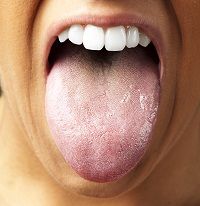Article
Is Sublingual Immunotherapy an Effective Treatment Option for Allergic Rhinitis?
Author(s):
Sublingual immunotherapy was developed nearly 30 years ago as an alternative to subcutaneous immunotherapy, an alternative that might trigger fewer systematic reactions such as anaphylaxis.

Sublingual immunotherapy (SLIT) was developed nearly 30 years ago as an alternative to subcutaneous immunotherapy, an alternative that might trigger fewer systematic reactions such as anaphylaxis.
The technique has mostly lived up to that promise, according to a new review published in Clinical and Experimental Otorhinolaryngology, but a fresh case study published by another journal at about the same time reminds allergists that the technique can trigger severe reactions.
The authors of the review found widespread agreement among studies and meta-studies that evaluated the risk of adverse reactions for patients who undergo SLIT.
A 2005 paper from Wilson et al. that analyzed data from 22 randomized controlled trials found that “no systemic reaction but some minor local reaction like itching and swelling of the oral mucosa were reported almost universally, but [they] were rarely of significance.”
A more recent meta-analysis by Radulovic et al. — an analysis of 49 studies that was published in 2011 — found no systemic reactions, no anaphylaxis and no use of epinephrine.
“To our knowledge,” the authors of the new review wrote, “there are only 11 cases of SLIT-induced anaphylaxis. In some of them, the allergen used was mixture of multiple unrelated non-standardized extracts. But also, there were patients who expressed a severe reaction after the first dose of a grass tablet.”
The review authors also noted that research to date indicated that SLIT appeared to be a safe technique for children who are less than 5 years old. A pair of trials on nearly 200 such children, they noted, produced only a handful of adverse reactions, none of them more serious than mild abdominal pain and diarrhea.
Yet given how long SLIT has existed as a technique, the total amount of safety data is relatively small, and a new case study illustrates that dangers do exist.
Pediatric allergists from the Hospital of Sakarya University in Turkey have used SLIT to treat allergic rhinoconjunctivitis in 17 girls and 27 boys (mean age: 10 years) over the past few years.
The children underwent skin prick tests to determine their allergic potential before receiving treatment designed to desensitize them to 1 or more specific allergens. Nearly all of the kids (41 of 44) received SLIT for dust mite mixture while 5 received treatment for grasses, 3 received treatment for mixed cereals and 2 received treatment for mixed molds.
Despite the rarity of reactions reported in the literature, 2 of the 44 pediatric patients in Sakarya experienced such reactions, 1 of which may be the first recorded case of SLIT-induced anaphylaxis in a minor.
The patient was a 15-year-old boy who suffered from moderate asthma and allergic rhinitis and received SLIT treatment of a mixture of grass and grain pollens. After experiencing only minor local reactions to the first two doses of the treatment, the boy suffered an immediate and severe systemic reaction to his third dose of the treatment, 4 puffs of APSI Staloral 300 IR/m.
Within 5 minutes of the treatment, which he took at home, the boy developed facial urticaria and edema, tongue edema, dyspnea and wheezing that was suggestive of anaphylaxis. The patient’s mother, moreover, measured his blood pressure at 80/50 mmHg.
The patient’s parents waited some time before getting him to a hospital and his condition had improved enough by that then that he received no formal diagnosis of anaphylaxis. His parents decided immediately thereafter to discontinue the SLIT treatment.
The other reaction, which was far milder, occurred in a 7-year-old boy who experienced significant sublingual swelling after the last dose in the first phase of his SLIT.
“In conclusion,” the authors of the case study wrote, “SLIT is not a very innocent form of therapy and the SLIT has to be followed by an allergist and be very careful on systemic and/or local side effects. Parents must be informed and taught what have to do especially when a systemic side effect occurs at home.”





